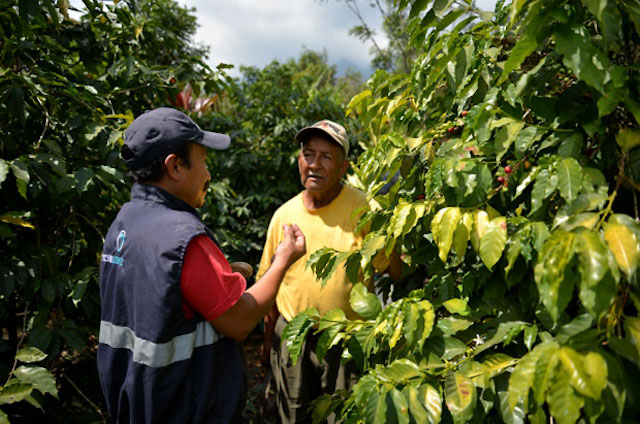Access to Finance for Central American Coffee Farmers
A new TechnoServe study points to a lack of financing options for smallholder coffee farmers in Central America, where a total of $1.5 billion is needed to replant farms that have been devastated by coffee leaf rust.

In recent years, coffee farmers in Central America have seen a sharp decline in productivity due to coffee leaf rust, a devastating fungus known locally as roya. Crippled by low yields and lacking the funds to invest in their own farms, smallholders need access to finance in order to address significant productivity challenges.
In 2014, TechnoServe conducted a study on the coffee sector and the financing options for smallholders in El Salvador, where coffee productivity has experienced the biggest slump in the region. The study pointed to the aging of plants as a key factor contributing to the spread of the disease. The average age of Salvadoran coffee trees is 34. Since trees become less resilient and productive as they age, planting new trees is critical to improving productivity.
TechnoServe’s study estimates that an investment of at least $500 million would be required to replant 60 percent of the current production area in El Salvador. According to our projections, if small-scale producers replanted 10 percent of their farms annually, each country in the region would require $150 million per year for a period of ten years. A total of $1.5 billion would be required to renew old coffee fields throughout Central America.
Banks see smallholders as too risky
To ensure higher profitability, smallholders need long-term loans of six to eight years. With low productivity hampering their ability to repay loans, farmers typically require flexible repayment terms, grace periods and low interest rates. They also lack sufficient collateral and access to risk management instruments.
In order to minimize their risk, commercial banks lend primarily to medium and large-scale growers. This leaves more than 250,000 smallholder coffee farmers in Central America without adequate financing options to replant their farms.
Available financing options
While there is a lack of credit alternatives, some smallholders, especially those with good credit history, can access the following options:
Cooperatives: In some cases, commercial banks lend to cooperatives, who in turn serve as second-tier banks providing credit to their members. Salvadoran state-owned banks also lend to cooperatives, although the value of the guarantees required and credit policies limit the size of the loans extended to farmers. Social investment funds, such as Root Capital and Oikocredit, provide financing to farmer organizations for farm inputs.
Microfinance Institutions (MFI): MFIs provide credit to small-scale farmers, and some offer long-term financing. However, interest rates are usually high and the amounts destined for the agricultural sector are low.
Anchor companies: These are generally coffee exporters who play a proactive role in helping their suppliers increase productivity by offering technical assistance and access to inputs. In Honduras, for example, Beneficio Santa Rosa has provided credit to over 2,000 farmers who are receiving technical assistance from TechnoServe. In El Salvador, TechnoServe has developed an alliance with UNEX, which will provide financing to 800 smallholder coffee farmers. However, there are a limited number of such anchor companies willing to provide financing to farmers.
Financing the future of coffee
Without long-term agricultural lending to replant their farms, smallholder coffee farmers in the region will continue to see low productivity. This can cause rural jobs to decline further and more out-migration of farmers to urban areas and other countries.
Several initiatives led by multilateral institutions have emerged in recent years to develop investment funds that can leverage investments by the private sector. More investment is critical by the governments of the region and the private sector in order to provide new credit options. The future of the Central American coffee industry hinges on initiatives that can develop sources of smallholder financing.



